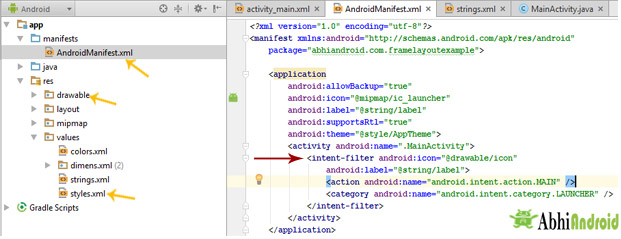

Intent filters are defined by the Android documentation as “an expression in an app’s Manifest.xml file that specifies the type of intents that the component would like to receive.” As it was previously alluded to, intent filters only work when we’re working with implicit intents, as these kind of intents require the Android system to find the appropriate component to start by comparing the contents of the intent to the intent filters declared in the Manifest file of other applications on the device. Implementation example: Image capturing.Without getting too much detail and the differences between the two, it is the latter type of intent that actively deals with intent filters, the main topic of this article. There are two main types of intents: explicit, and implicit intents. It may also be looked at as a messaging object you can use to request an action from another app component, as the Android official documentation further explains, and intents are generally known to be used for three main use cases: starting an Activity, a Service, and to deliver messages to a BroadcastReceiver. As defined by Google, an Intent is an abstract description of an operation to be performed.

Getting started with Android’s intent filtersĮver since the inception of the Android OS, the concept of intents has been one of the main building blocks for navigation within the operating system. class LoginActivity : AppCompatActivity() Īnd the test will become package io.codetheworld.viewmodelunittestdemo import io. import io.mockk.* import import import Garza Follow Ivan is an Android engineer at Mixhalo, a passionate fútbol fan, and an amateur salsa maker. This is a simple application with LoginActivity that accepts the user enter username, password, and press Login button to log in to the application.


It may not be a best practice, but I think that is enough for me and my project for now. When I tried to write unit tests for my main logic - ViewModel class, it did not work! Some articles are out of date, library versions do not match… And some kind of error that I don't know where they come from.Īnd this story is just a simple note - “How to make it work?”. When I develop an Android application, I follow some “best practice” articles about Coroutines, LiveData, MVVM patterns… There are a lot of things that need to be catchup, especially for a backend developer like me.


 0 kommentar(er)
0 kommentar(er)
